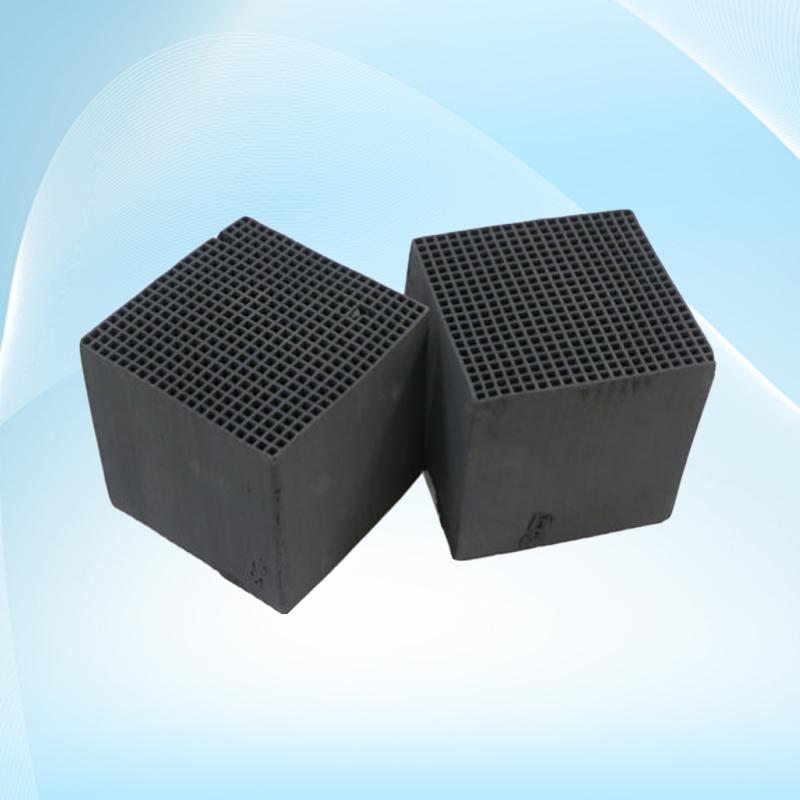
Products
Honeycomb activated carbon, with its large specific surface area, microporous structure, high adsorption capacity, and high surface area, is widely used in air pollution control. The honeycomb activated carbon adsorption method is used, which involves the contact of exhaust gas with porous activated carbon with a large surface area. The pollutants in the exhaust gas are adsorbed and decomposed, thereby achieving purification. The pollutants that can be removed to varying degrees by honeycomb activated carbon include nitrogen oxides, carbon tetrachloride, chlorine, benzene, formaldehyde, acetone, ethanol, ether, methanol, acetic acid, ethyl ester, styrene, phosgene, odorous gases, etc.
Features:
Honeycomb activated carbon has a microporous structure and is widely used in air pollution control due to its large filtration area and high adsorption capacity.
The pollutants that can be removed to varying degrees by honeycomb activated carbon include nitrogen oxides, carbon tetrachloride, chlorine, benzene, formaldehyde, acetone, ethanol, ether, methanol, acetic acid, ethyl ester, styrene, phosgene, odorous gases, etc.
